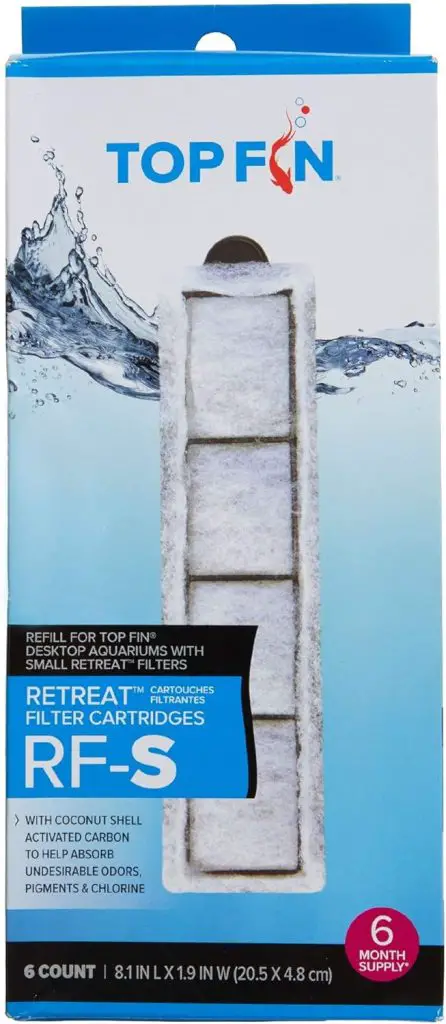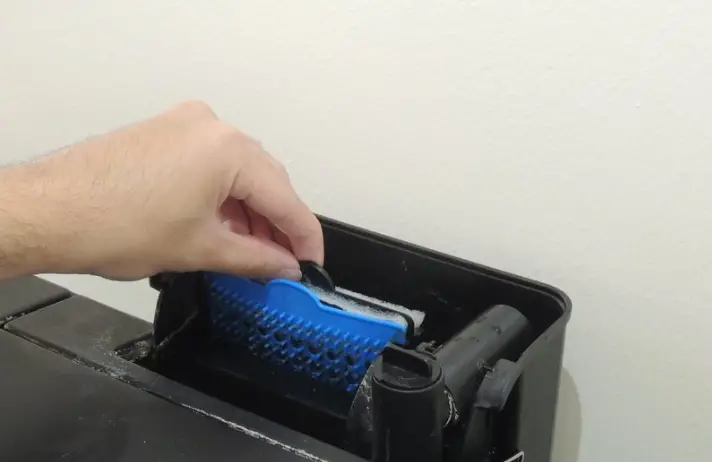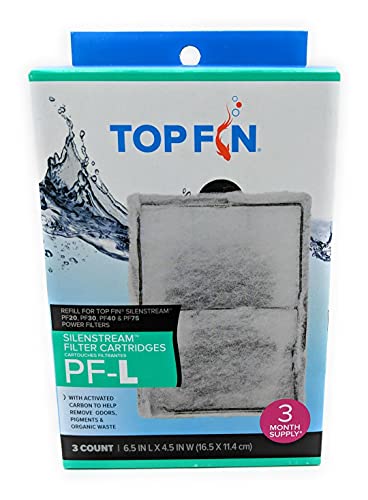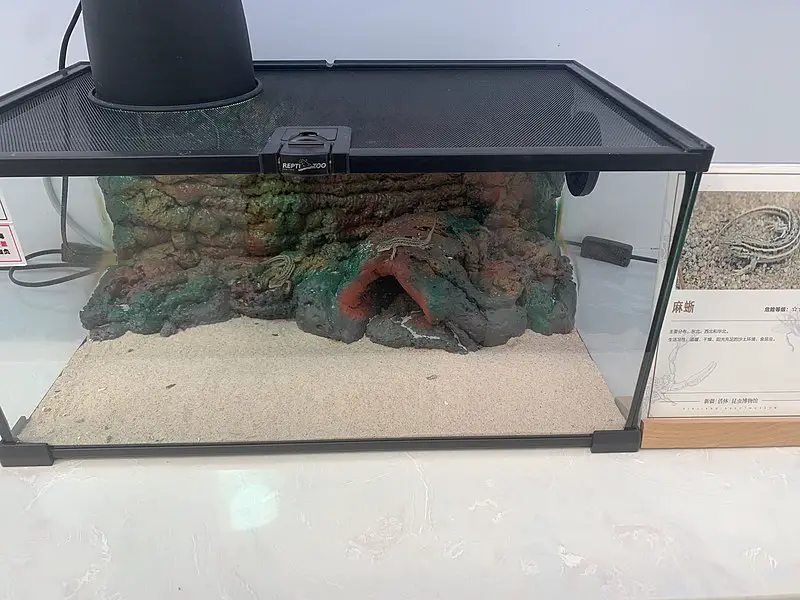Imagine checking on your aquarium and… uh oh! The usual hum of your Top Fin filter is gone. It’s totally stopped! Filters are like the secret superheroes of your aquarium, keeping the water clean and safe for your fish.
So, when they quit, it’s definitely a problem. But don’t worry, fixing your filter is usually pretty easy. Let’s figure out what happened and get your tank back to normal.
Why Your Top Fin Filter Might Stop Working
There are a few super common reasons why filters sometimes give up. Let’s tackle them one by one:
Case #1: The Clogged Filter
The Gunk Build-Up: Your filter traps all sorts of stuff – leftover food, fish poop, and even old plant leaves. All that gunk builds up inside the filter, making it harder for the water to pass through.
Signs of Trouble: Your filter might start making funny noises, like gurgling or straining. The water coming out might be slow or barely a trickle. These are all clues that your filter is clogged.
The Fix: How you clean the filter depends on its type.
Cartridges: These are completely replaced with fresh ones. Check how often the instructions say to swap them out.
Cleanable Parts: Some filters have sponges or other parts you can rinse out. Never use regular soap! Just swish it around in old tank water (that you would change out anyway) or plain tap water that’s been treated to make it fish-safe.
Case #2: The Power Problem
Wiggly Wires: Double-check that your filter’s plug is snug in the outlet. Sometimes, they wiggle loose, and that cuts off the power!
Outlet Issues: Try plugging the filter into a different outlet. If it works there, the original outlet might be faulty. This can get complicated, so ask an adult for help if this happens.
Power Surge Problems Big storms with lots of lightning can sometimes cause power surges, a sudden spike of electricity that can damage electronics, including your filter.
Case #3: The Broken Impeller
The Little Powerhouse: The impeller is the heart of the filter. It’s like a tiny fan that spins and helps push the water through. If it’s broken or jammed, the whole filter grinds to a halt.
How to Check: Sometimes, gravel or gunk will get stuck on the impeller. You might have to carefully take the filter apart to check. (This is a good time for an adult to help!) Clean off any gunk and see if the impeller spins freely. If it’s broken, you’ll probably need a replacement part.
Case #4: The Wrong Flow
The Goldilocks Zone: Your filter needs to be “just right” for the size of your tank. Imagine a giant fish tank with a teeny filter meant for a goldfish bowl – it won’t be able to keep up!
Spotting the Problem: Is the water barely moving, even with the filter on? Does the water look dirty even after cleaning the filter? You might need a bigger or more powerful filter.
Recommended Top Fin Filter:

Filtration 101

“How Filters Work”
- Mechanical: The filter media (sponges, pads, etc.) act like a net, catching the gunk you can see (fish poop, food bits).
- Biological: Good bacteria live in the filter media. It sounds gross, but they’re super important! They break down invisible waste that can harm your fish.
- Chemical: Some filters have special materials (like activated carbon) that remove stuff from the water you can’t even see, like chemicals or odors.
Beneficial Bacteria Boost
- Gentle Cleaning: Never scrub filter media with soap; only rinse in old tank water or special dechlorinated water. This keeps those good bacteria alive!
- Cycling Crash: If the filter stops working for a long time, the bacteria can die. This leads to a spike of bad stuff in the tank, so fixing the filter fast is important!
Troubleshooting Steps: From Clogs to Power Surges
Okay, time to get your detective hat on! Let’s go through a step-by-step plan to find the cause of the filter problem:
Step 1: Check the Filter
Cartridge Swap: If your filter uses cartridges, start by replacing it with a new one. See if that instantly fixes the problem. If it does – great! Remember to change the cartridge regularly.
Rinse & Repeat: If you have a filter with parts you clean, take it apart carefully (a grown-up can help). Rinse the sponges or filter pads in either old tank water (that you would change anyway) or dechlorinated tap water. NEVER use regular soap! Put it all back together and see if it works now.
Diagram Time: [Include a basic diagram of a filter here, with the main parts labeled!]
Step 2: Verify Power Supply
The Plug Check: Is it in the outlet? Sometimes, just wiggling the plug can fix it!
Outlet Swap: Try plugging the filter into a different outlet. If it works there, the first outlet might be the problem. That’s tricky stuff, so get an adult to help.
Step 3: Inspect the Impeller
Finding the Fan: Carefully take your filter apart to get to the impeller (where the water sucks in). It looks like a little fan blade.
Gunk Buster: Clean any gunk or gravel off the impeller. It should spin freely.
Broken Blade?: If the impeller is cracked or damaged, you’ll probably need a new part.
Step 4: Additional Tips
Listen Up: Is the filter making a loud humming or rattling sound? That could mean the motor (the part that powers everything) is starting to wear out.
Replacement Time: Sometimes, filters get old. If you’ve tried everything and it still won’t work, it might be time for a new one.
Important: Always unplug your filter before taking it apart!
Step 5: Think Green!
Even while fixing your filter, you can be kind to the planet. Here are some easy tips:
- Reuse When You Can: Some filters have parts you can reuse, even while replacing the stuff inside. Check what your filter allows!
- Water-Smart Cleaning: Rinse filter parts in the bucket of old water you took out of your tank—no clean water wasted! For a quick rinse, use a gentle stream, not a full blast.
- Toss it Right: Old or broken filter parts need special disposal. Don’t just throw them in the trash. Check how to recycle them in your area safely.
Being an awesome aquarist means caring for your fish AND the environment!
Air Bubbles MIA? Diagnosing Air Pump Issues
Lots of aquariums have filters that make bubbles. But what if they disappear? Here’s what to check:
Filter Not Blowing Bubbles: Causes
Back to the Clog: A super-clogged filter can even stop the bubbles! If you haven’t checked the filter recently, start there (see the steps above).
Air Pump Trouble: Air pumps are those separate little boxes that connect to your filter with a thin tube. If the pump isn’t working, no bubbles!
Troubleshooting the Air Pump
Connection Check: Make sure the tiny air tube is plugged firmly into the air pump and the filter. Sometimes, it pops loose.
Kinked Tube: Is the tube bent or twisted super tight? Think of a straw you’ve bent – it gets hard to drink through! Straighten out any kinks in the tube.
Inside the Pump: Most air pumps have a little rubber part that vibrates to push the air. This part can get old and tear. If you open the pump (ask a grown-up for help), you might see if it’s damaged.
Extra Clues:
Is the air pump buzzing even though there are no bubbles? Something might be blocking the airflow.
Is the pump totally silent? It might have lost power (see the power troubleshooting steps above).
Remember: Not ALL filters are designed to make bubbles. If you’re not sure, check the instructions that came with yours!
Advanced Troubleshooting & Enhancements
When to Upgrade Your Filter
Slow Flow, Speedy Buildup: Even if you clean your filter all the time, is the water still moving too slowly? Does it get dirty super-fast? These mean your filter can’t keep up with the size of your tank.
More Fish, More Filter: Have you added any new fish recently? A bigger fish family needs a bigger filter to clean up after them.
Upgrade Talk: Ask at the pet store or do some research online to find the best filter size for your specific tank.
Noise Troubleshooting
The Rumble: Filters should hum quietly. Loud rattling or grinding could be a stuck impeller (remember that fan part!) or gunk trapped inside. A quick cleaning might solve it.
Buzzing Trouble: Air pumps sometimes get noisy on their own. Is it sitting on something hard that makes it vibrate more? Try putting a folded washcloth under it to muffle the sound.
Old Age: Sometimes, parts just wear out. If nothing else helps, the filter or pump might get too old and need replacing.
Beyond the Basics: Less Common Filter Fixes
- The Case of the Air Lock: Has your filter suddenly stopped, even though it seems to be running? A big air bubble sometimes gets trapped inside, like a giant clog. Most filters can release trapped air (check the instructions). It often involves turning the filter off, tilting it, and giving it a gentle shake.
- Leaky Seals and Squeaky Wheels: Filters have rubbery rings and seals to stop leaks. These get old and sometimes crack if you see water dripping, where it shouldn’t inspect those rings closely. Replacement parts might be available, or you could use a bit of aquarium-safe silicone.
Expert Tip: Sometimes, weird noises or problems mean a part deep inside the filter’s motor starts to fail. If you’ve tried EVERYTHING else, it might sadly be time to retire that trusty filter and get a new one.
Conclusion
Happy Fish = Happy Filter: You’ve done some awesome detective work to solve the filter problem. Remember, a clean and working filter is key to keeping your fish friends healthy and thriving!



